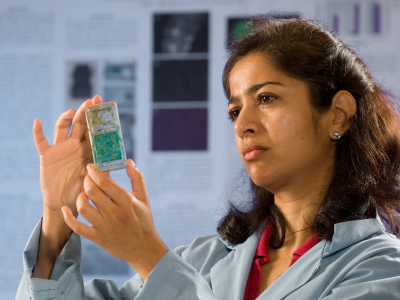Scientists and Research

Scientific Research
- Collaborative Research in the Arctic Towards Understanding Climate Change: The work of Kevin Arrigo
- From Stable Chromosomes to Jumping Genes: The work of Barbara McClintock
- An Elegant Experiment to Test the Process of DNA Replication: The work of Meselsohn and Stahl
- The Founding of Neuroscience: The work of Santiago Ramón y Cajal and Camillo Golgi
- Tracking Endangered Jaguars across the Border: The work of Sergio Avila
- Atmospheric Chemistry Research that Changed Global Policy: The work of Mario Molina
- Revolutionizing Medicine with Monoclonal Antibodies: The work of César Milstein
- Uncovering the Mysteries of Chronic Mountain Sickness: The work of Fabiola Léon-Velarde
Profiles in Science
- Luis E. Miramontes: Chemist and inventor of oral contraceptives
- Bernardo Houssay: Pioneer in endocrinology
- Craig Lee: Ice patch archaeologist
- David Ho: HIV researcher
- Louis Tompkins Wright: Surgeon, scientist, civil rights activist
- Cecilia Payne: Figuring out what stars are made of
- Carlos J. Finlay: Eradicating yellow fever
- Jazmin Scarlett: Fostering community resilience to hazards
- Ramari Stewart: Whale expert, at the crossroads of science and tradition
- Johnson Cerda: Promoting Indigenous perspectives in environmental management
- Ellen Ochoa: Engineer and astronaut
- Ruth Benerito: Using basic physical chemistry to solve practical problems
- Franklin Chang Díaz: Propulsion pioneer for future generations of astronauts
- Percy Lavon Julian: Revolutionizing medical treatment through chemical synthesis
- Luis Walter Alvarez: Uncovering secrets of the atom and life on earth
- France Anne-Dominic Córdova: Climbing through astrophysics and science policy
Sign in or register
For an ad-free experience and access the Visionlearning Classroom, sign in or register.
